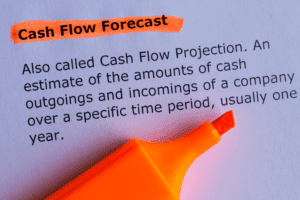
This results in a consistent depreciation expense each year, making it easy to budget for and plan ahead. The residual value of the asset is subtracted from its original cost before calculating the annual depreciation expense. The residual value is the estimated value of the asset at the end of its useful life. DDB is double declining balance method best used for assets that lose value quickly and generate more revenue in their early years, such as vehicles, computers, and technology equipment. This method aligns depreciation expense with the asset’s higher productivity and faster obsolescence in the initial period. HighRadius offers a cloud-based Record to Report Suite that helps accounting professionals streamline and automate the financial close process for businesses.
Why You Can Trust Finance Strategists
By the end of this guide, you’ll be equipped to make informed decisions about asset depreciation for your business. Let’s assume that a retailer purchases fixtures on January 1 at a cost of $100,000. It is expected that the fixtures will have no salvage value at the end of their useful life of 10 years. Under the straight-line bookkeeping method, the 10-year life means the asset’s annual depreciation will be 10% of the asset’s cost.
How to File Back Taxes Without Records
This allows businesses to write off the cost of the asset more quickly and reduce their taxable income. Second, it is more reflective of an asset’s decline in value over time, as assets tend to lose more value in the early years of use. Through this example, we can see how the DDB method allocates a larger depreciation expense in the early years and gradually reduces it over the asset’s useful life.

Why Use the Double Declining Balance Method?
- Suppose a company purchases a machine for $10,000 with a useful life of five years.
- There’s no need to worry about factors like salvage value or accelerated depreciation rates – you simply divide the cost of the asset by its useful life.
- NJCPA USA is a leading financial consulting firm that provides comprehensive accounting services to businesses of all sizes.
- For instance, the IRS requires compliance with the Modified Accelerated Cost Recovery System (MACRS), which may involve salvage value considerations for tax purposes.
- When the depreciation rate for the declining balance method is set as a multiple, doubling the straight-line rate, the declining balance method is effectively the double-declining balance method.
At Finance Strategists, we partner with financial experts to ensure the accuracy of our financial content. For information pertaining to the registration status of 11 Financial, please contact the state securities regulators for those states in which 11 Financial maintains a registration filing. Finance Strategists has an advertising relationship with some of the companies included on this website. We may earn a commission when you click on a link or make a purchase through the links on our site. All of our content is based on objective analysis, and the opinions are our own. Thus, an increase in the cost of repairs of each subsequent year is compensated by a decrease in the amount of depreciation for each subsequent year.
- This may be beneficial for businesses that want to reduce their taxable income in the short term.
- While double declining balance has its money-up-front appeal, that means your tax bill goes up in the future.
- In this section, we will be discussing double declining balance depreciation, its definition, how it works, and its advantages and disadvantages compared to straight-line depreciation.
- If impairment is identified, the book value is adjusted to reflect the recoverable amount.
- The high-low method is a simplified version of the double-declining balance method.
Building Better Businesses
When you talk to a financial professional about depreciation, they’re going to recommend one of two methods. The two methods are the double declining method, and the straight line depreciation method. For instance, if a car costs $30,000 and is expected to last for five years, the DDB method would allow the company to claim a larger depreciation expense in the first couple of years. The double declining balance, an esteemed accelerated depreciation method, operates on the premise that some assets are analogous to meteors in their fleeting yet intense utility. They provide the highest value shortly after acquisition and then experience rapid deterioration due to constant use. The approach of this depreciation method is structured so as to allocate larger depreciation expenses early in the asset’s lifespan, mirroring its real-world wear.

There are different methods of depreciation, but two of the most common are Straight-Line depreciation and Double Declining balance Depreciation. Both methods have their pros and cons, and which one a company chooses to use depends on its specific needs and goals. Additionally, Straight-Line Depreciation can be useful for assets that have a relatively consistent level of use each year. Straight-line depreciation is calculated by dividing the cost of the asset by its useful life. https://www.bookstime.com/ For example, if an asset costs $10,000 and has a useful life of 5 years, the annual depreciation expense would be $2,000 ($10,000 divided by 5).

This technique provides a plethora of benefits, including accelerated tax deductions that enable companies to protect more income from taxation in the early high-revenue years of the asset’s life. It coincides neatly with how assets are actually used, bringing lower maintenance expenses at first and consequently enhancing a company’s cash flow. Choosing the right depreciation method is essential for accurate financial reporting and strategic tax planning. The double declining balance method offers faster depreciation, suitable for assets that lose value quickly, while the straight line method spreads costs evenly over the asset’s useful life.
The adjusted basis is equal to the asset’s original basis minus accumulated depreciation. For a $5,000, five-year asset, the first-year depreciation would be $2,000 (40 percent of $5,000). In year two, the basis would be adjusted to $3,000, and the depreciation expense would be $1,200 (40 percent of $3,000). By using depreciation, the total cost of an asset is expensed over a number of years referred to as the useful life or recovery period. For tax purposes, the recovery periods for various types of assets are specified by the IRS in the United States.
